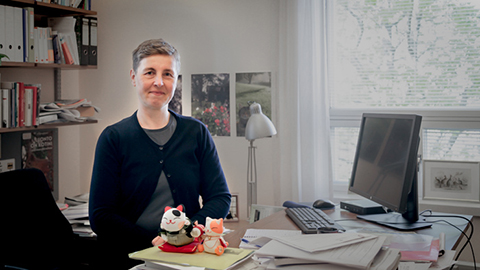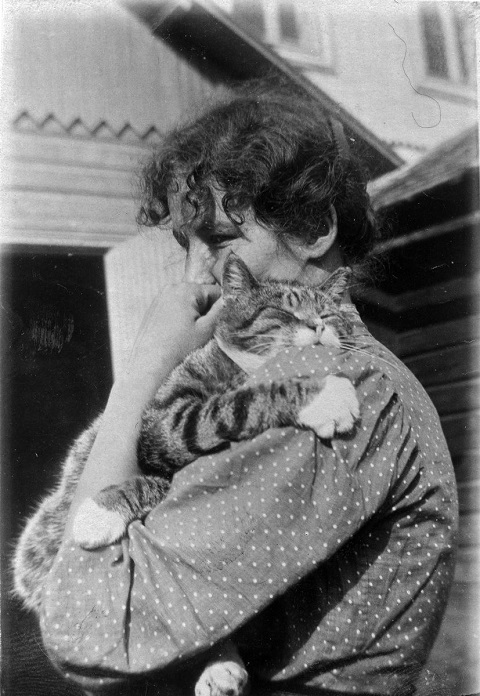Farm Cat Was More than a Utility Animal in the 19th Century
Despite the fact that the shared history of cats and humans is quite long, there has been very little research on cats. Professor of European and World History at the University of Turku Taina Syrjämaa has tackled this issue and, in her research, she sheds light on cats’ lives in Finland in the 19th and early 20th centuries. Although the times have changed since then, the relationship between cat and human is also greatly characterised by continuity and similarity. Already in the 19th century, cats were often considered family members.

– I am definitely a cat person, but it took me a while to realise that I could do research on something that is so important to me. It also took certain kind of courage. First, I did research on dogs, which was a good thing since I’ve never been that familiar with dogs. It also gave me good practice for animal history, says Syrjämaa.
The 19th century saw an international pet boom, which makes it a significant time period considering modern pet culture. However, we know considerably less about the cats of that period than we do about dogs, for example. This is probably due to the fact that dogs were involved in many societally visible activities such as dog shows and purebred associations. Syrjämaa’s research is thus mainly based on photographs and oral history, but also on material from the media as well as parliamentary proceedings of that time.
House Cat and Farm Cat Were Both Loved
The historical material includes aspects that are probably familiar to today’s cat people as well. In her research, Syrjämaa emphasises cat’s status as a family member. In addition, she wants to question the persistent classification of animals based on their utility. It was often the case that the so-called utility animals meant much more to people than the name suggests.
– In the 19th century, people used to differentiate between a house cat and a farm cat. For example, a house cat could have more privileges and a farm cat wasn’t necessarily allowed inside the house. However, my research shows that this tendency for differentiation was rather artificial. The status of an individual cat could change considerably during his or her life, and many people were very attached to their farm cats, says Syrjämaa.
Syrjämaa also wants to contradict the misbelief that pets have a completely different status today than they did before.
– The old photographs show that many cats were very much loved by humans. I especially like photos where a cat poses in a studio, either by him or herself or with a human.
Attitudes towards cats have, of course, also changed over time. For example, the sterilisation of cats was uncommon until the end of the 20th century, and earlier accounts emphasise the excessive number of cats. In addition, the availability of veterinarian services was low and, when a cat became ill, there were usually two options: either the cat would get better by itself or it would have to be killed.
– Killing cats was a necessary, but an unpleasant and difficult task for many. People often wanted to look after their cats as well as they could, just as people do today.
Cats in the City
Cats’ territories varied from modest crofts to the homes of the gentry. In an apartment building at the early 20th century, neighbours usually knew the cats and could, for example, open the outer door for them. Even though Finnish cities were still rather small, moving around often proved difficult for a cat. They usually ended up wandering in other people’s properties, which could cause conflicts that were life-threatening to the cat. Nevertheless, the countryside had its dangers as well: strangers and wild animals.
– Today, cats’ territories are often even more limited, especially in cities where cats are usually walked in a harness. This very much prevents contact with other cats and animals, but, on the other hand, it strengthens the relationship between the cat and the human.
Including Animals in Research is Important
Syrjämaa emphasises that humans are not separate from other animals. There is constant multi-species interaction, even though humans usually dominate it. Other animals have an impact on humans, and societies and cultures form through coexistence.
– The methodological challenge in animal history is that all material is produced by humans. On the other hand, the topic of otherness is essentially connected to all historical research. Considering research on animal history, we bring a new dimension to otherness: species. Since all societies are inevitably multi-species, it is essential that non-human animals are also made visible in historical research.
Syrjämaa’s research on cats as family members in Finland in the late 19th and early 20th centuries is a part of the research project ”Animal Agency in Human Society – Finnish Perspectives 1890–2014” which is funded by the Academy of Finland.
>> Website for the Animal Agency in Human Society research project
Text: Heli Lassila
Photos: Heli Lassila and Edith Södergran / Svenska litteratursällskapet i Finland